STOPPING, NOTICING, ENGAGING
WITH KITCHEN SUGGESTIONS: A RECIPE FOR QUINCE BREAD/PAIN AU COING & DUCK BREAST POSSIBILITIES
My head is full of ideas these days, all floating half-formed.
intensely pink dahlia
Some arise from the talk I heard on Sunday by Jeff Wall, famed international artist whose medium is photography. His big retrospective show just opened at MOCA here in Toronto, over fifty photographs made between the early 80’s and 2023. It’s dazzling. He talked about the way he came to work with collaborative set-up photographs at a large scale, so people can engage with them as they do with large tableau paintings.
a wonderful photo, not huge, in the Jeff Wall show, called “mother of pearl” photographed badly by me
It made me think about why any of us create and publish photographs or writing, whether in books or magazines or here on Substack. We’re communicating with others, reaching out, wanting to have some kind of impact. Creative work enlarges us as we do it, and it can enrich others.
It may just be momentary, or instead it may shift someone’s perspective, give them delight, cause them to pause for a moment and reflect. I imagine that the humans who made paintings on the walls of caves in prehistoric times (think Lascaux, Cuevas de Altamira, and many others on other continents) were also communicating with others, rather than just pleasing themselves.
Perhaps because I’ve been thinking about photography more intensely following the Jeff Wall talk, this week I’ve been stopping, noticing, and photographing more often. I feel I’ve pressed some kind of refresh button. It’s invigorating. Noticing and engaging are life-giving.
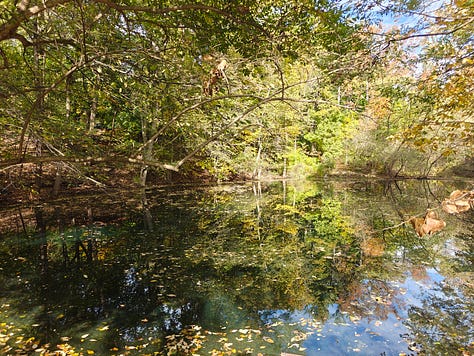
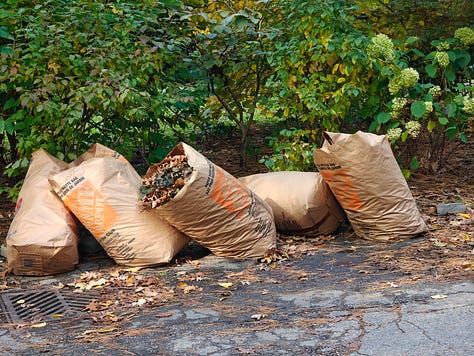
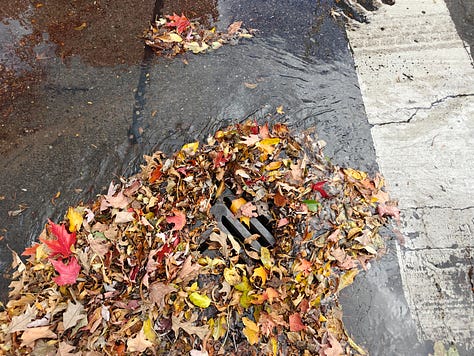
shots from this week: Wychwood pond; bags of gathered leaves; leaves and water by a drain
And to echo the thoughts about drawing that I wrote in last-week’s post, a longer stop, say if you’re stuck in a waiting room, is a chance to notice some more and perhaps to try a quick pen or pencil sketch…
I’ve learned that a very small book that fits in my bag, and a pencil or pen are great resources when I’m waiting. I love being a beginner.
KITCHEN SUGGESTIONS
QUINCE BREAD/PAIN AU COING
My friend Simon Thibault who lives in Nova Scotia and has access to a generous quince crop at this time of year, wrote to me this week asking if I would consider publishing the recipe for pain au coing, Provençal quince bread, that’s in my HomeBaking book. He owns a copy of the book, but it’s now out of print, and each year he has people asking him for quince recipes. So here it is, lightly adapted from the recipe on page 128-129 of HomeBaking.
This recipe is as close as I could come to the bread I had tasted at Ile-sur-la-Sorgue Sunday market over 35 years ago: a tender bread dough, lightly sweetened with honey, wrapped around a whole quince. The quince bakes inside the bread, turning a pale pink and perfuming the loaf as it cooks.
If you have about a kilo (just over 2 pounds) of good bread dough, whole grain or not, then just use that. If you’re making a dough from scratch, your bread will have more flavour if you use a biga or old white dough (as below) or some activated sourdough starter.
old dough
½ teaspoon active dry yeast
1 cup lukewarm water
About 2 cups unbleached all-purpose or whole wheat flour
bread
½ teaspoon active dry yeast
1 cup/250 ml lukewarm water
1 tablespoon/15 ml honey
3 to 4 cups/400-500 grams whole wheat or unbleached all-purpose flour, or a mix
2 teaspoons/12 grams fine salt
2 medium to large quinces (1/2-3/4 pound/250-375 grams each), washed but not peeled
About 2 tablespoons/30 grams unsalted butter, melted, for brushing on
Make the old dough a day before you wish to bake. Knead it for several minutes until smooth then set aside in a bowl, covered, to ferment overnight or for up to 2 days.
To make the bread dough, begin with the yeast dissolved in the water, stir in the honey, then cut the old dough into 5 or 6 pieces and add it in. Break the dough pieces up with your fingers. Add 2 cups of flour and the salt and mix to a smooth batter, then add about another cup of flour, stir it in, then turn out onto a lightly floured surface and knead, incorporating flour only as needed, until smooth and elastic, about 7 minutes.
Place the dough in a clean bowl, seal off with a plastic bag or wrap, and let rise for about 4 hours. It will have doubled in volume and will be soft and puffy.
Turn it out onto a lightly floured surface and cut it in half with a sharp knife. Let rest loosely covered for a few minutes. Meanwhile lightly grease a baking sheet with olive oil or butter.
To shape the breads: Flatten one piece of dough out to a round about 9 inches/nearly 25 cm across. Place one quince on your work surface and drape the dough round over it, pulling it down around the fruit. Turn the whole thing upside down and pinch the dough together to enclose the fruit completely. Place the filled dough seam side down on the baking sheet, then repeat with the second quince and piece of dough. Leave a 2 inch/5 cm or more, space between the two breads. Cover loosely and let rise for an hour.
Meanwhile place a rack in the lower third of the oven and preheat to 400F/200C.
Brush each loaf with melted butter and put the baking sheet in the oven. Bake for 20 minutes, then lower the heat to 325F/160C and bake for another 25 to 30 minutes. The breads should be golden brown.
Let the breads stand on a rack for 30 minutes to cool and firm up before slicing. Slice into wedges.
NOTE: For a more over-the-top version, you can stuff the quince before you wrap it in the dough round: Cut out the core, working from the top, and stuff the hollow with a mix of chopped toasted almonds, a little sugar, and a drop or two of rosewater.
DUCK BREASTS
Boneless duck breasts feel like a luxury, but they can be quite economical. I like to have two or three in my freezer, to have on hand for last-minute events. They defrost quickly. I rub salt or shio koji, and perhaps an aromatic such as blue fenugreek powder. on the fat side, then cut a cross hatch pattern on it. I sear them in a lightly oiled cast-iron skillet, starting at a mild heat and increasing it, until I have a browned crisp surface. I turn the breasts over to touch the flesh side with heat for about a minute or two only. Then they can sit for awhile before I slice them.
The slices can go into a stir-fry at the last minute, with say some bitter greens. That’s the last-minute solution.
But if you have more time, the other great use for duck breast is in the brilliant Persian dish fesanjun. The sauce is made of ground walnuts in water, flavoured with pomegranate molasses and a touch of cassia (cinnamon). The sauce cooks down for a couple of hours to intensify. I add the duck (and the fat that renders off the breasts as they sear) very shortly before serving, so that it cooks a little more but doesn’t have a chance to toughen. There’s a recipe in my Taste of Persia book.
supper earlier this week: fesanjun with brown basmati and a side of roast cauliflower. As you can see, fesanjun is not especially photogenic. But it is so delicious!
Happy Diwali to you all.
found beauty in my garden this week, maple leaf on garlic chives

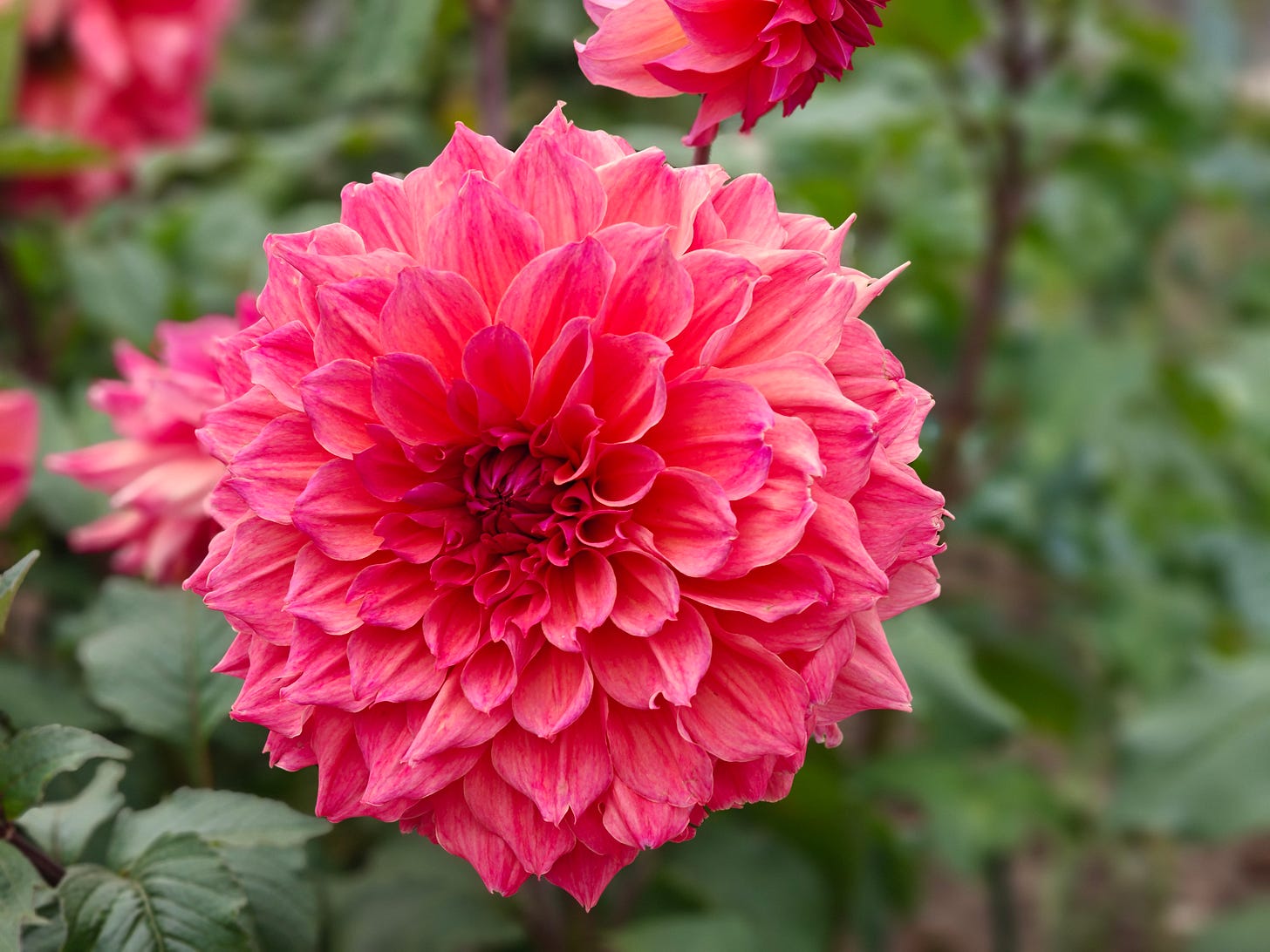
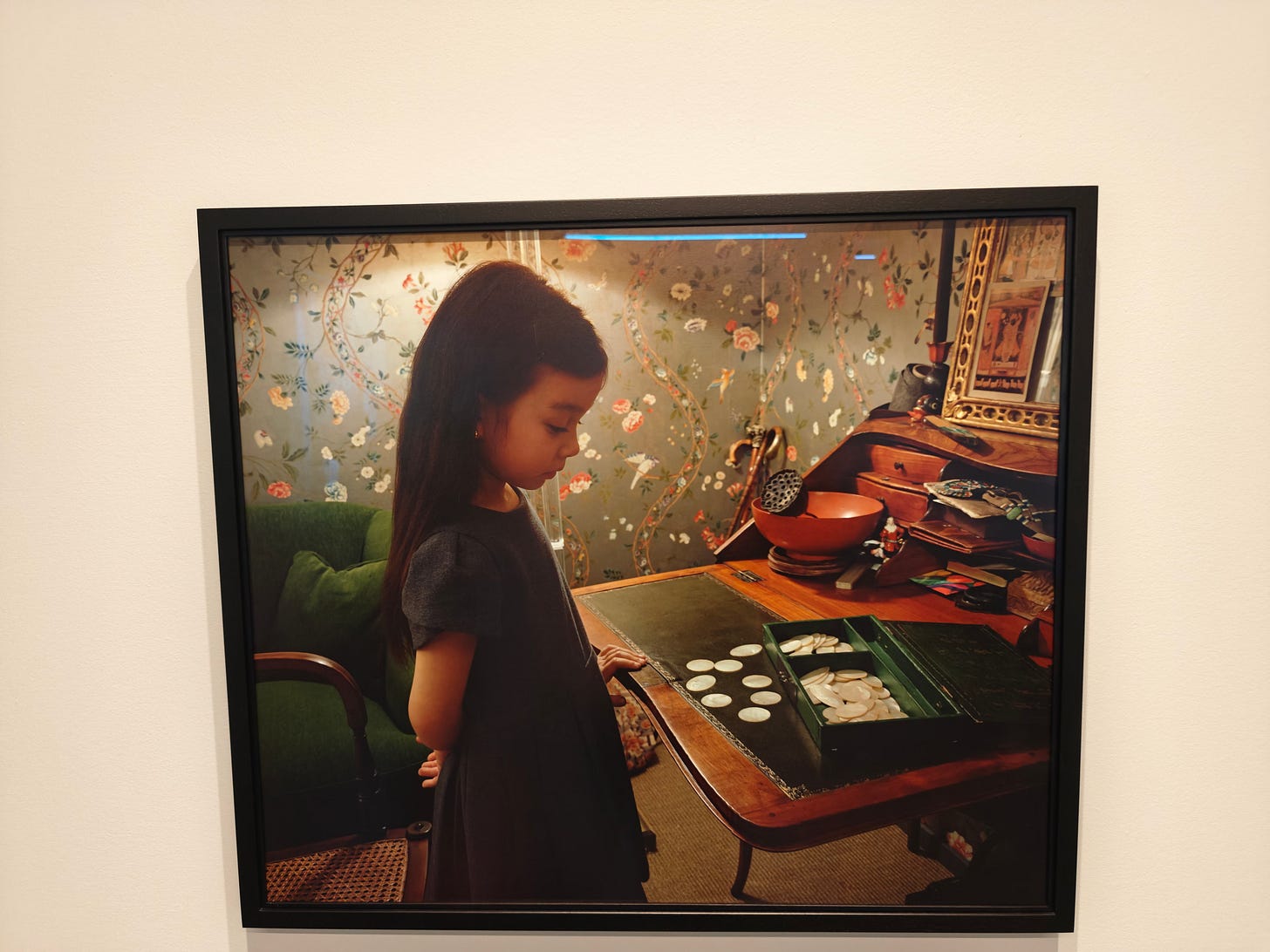


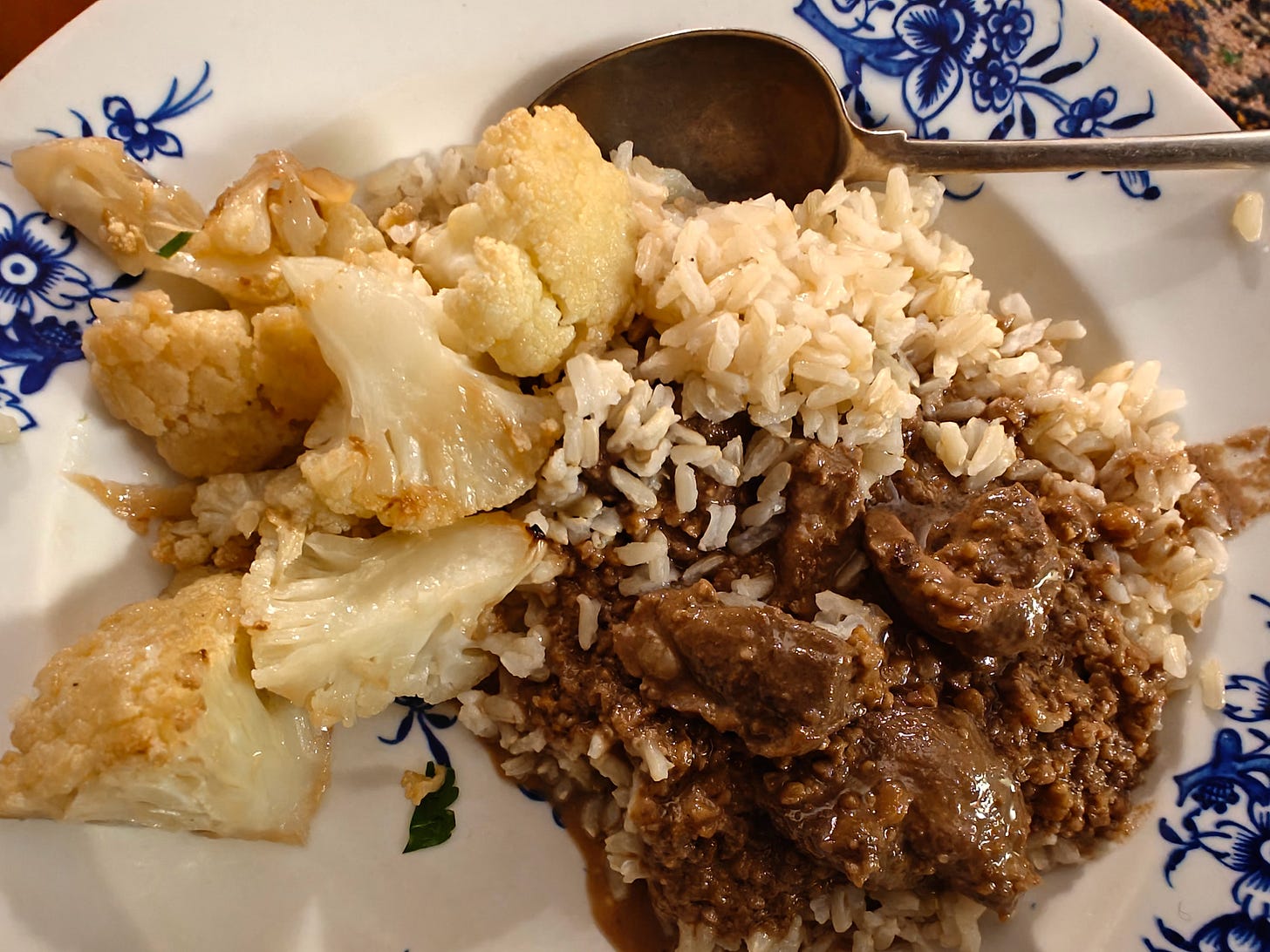
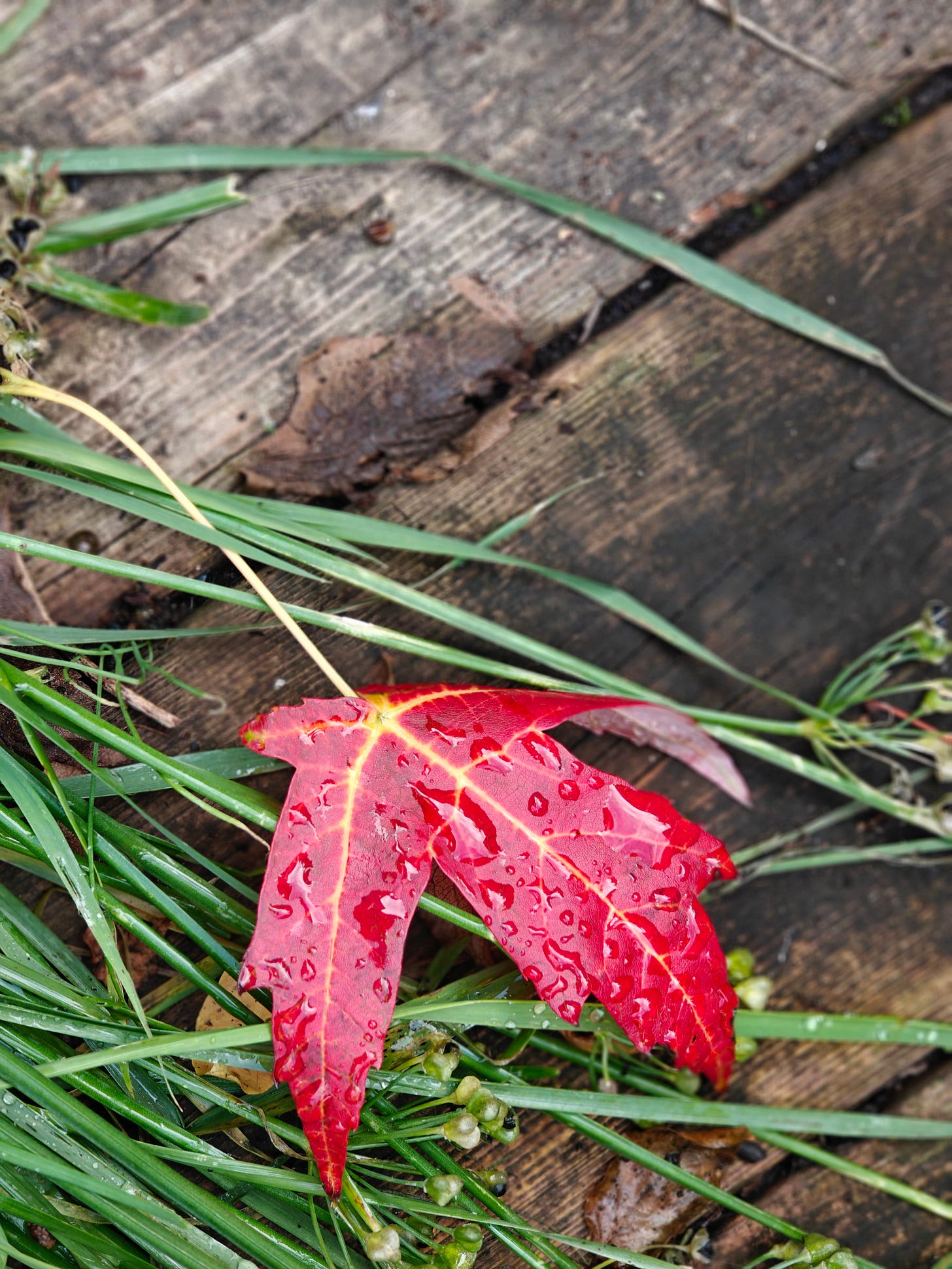
Love the quince bread recipe - there’s a similar recipe in the English trad but with pastry rather than bread dough. It’s been a fabulous year for quince.”